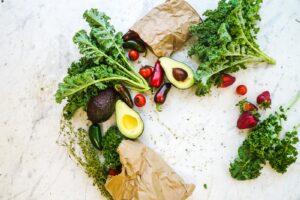As we all know, adults ages 23 – 39 years old are the ruin of all things. Somehow the millennials are destroying the economy by not buying napkins, diamonds, sugary cereals, and luxury goods, and by not eating at chain restaurants. What villains for not purchasing these obviously key and necessary products! Then in that same paint stroke they are good-for-nothing layabouts, stuck and unable to purchase homes or build savings.
According to Tim Gurner, the problem is Avocado Toast. “When I was trying to buy my first home, I wasn’t buying smashed avocado for $19 and four coffees at $4 each.”
The Australian multimillionaire truly believes that $23 is the cost of an Avocado Toast and single coffee. That is what he thinks these minimum-wage working “kids” are paying for a smear of guac on toasted sourdough. It could not possibly have anything to do with housing costs that are three times higher than the cost of their grandparents’ homes during a time when people compete for lower paying jobs in higher populated cities and deal with the burden of crippling student debt.
So which is it? Are we taking after our grandparents’ and great grandparents’ spirits of tightening the belt and coin purse during an economic recession by avoiding superfluous purchases that are killing nonessential international businesses? Or are we useless spendthrifts wasting entire paychecks on light brunch food items?
As social media influencers continue on this trend of environmentally friendly options, DIY projects, how to’s, and zero waste, it’s incredibly important to point out that it’s the same thing that my lovely Grandma Joyce and her family did through the wars and the Great Depression. These same trends now gaining momentum across YouTube, TikTok, Reddit, Pinterest, and Instagram were once normal, everyday things not even 85 years ago.
Indeed, we are channeling our great grandparents in these hard times. They weren’t buying disposable napkins or luxury handbags. They used rags and homemade cleaning solutions and purchased vegetables and milk from their neighbors.
But of course, let us blame the Sunday afternoon treat of an Avocado Toast, available at The New Moon Café in Aiken, South Carolina for a mere $5.99 (+ $1.11 for an additional egg). This modest fee for a nice breakfast from a local café supports friends, students, and neighbors who work in the kitchens and bus the tables. These purchases mean more to the local community than a dollar spent at a big box store, a dollar that may never be seen in the local community again.
In the spirit of the murder of the fatted conglomerate calf on the sacrificial fires of commerce, let us all continue to support local businesses, farms, zero waste alternatives, and homemade and ethically produced goods. I, for one, welcome the Grandma Cottage core (also known as cottagecore) movement. But let’s blame the toast.
Six Ways Millennials are Channeling the Greatest Generation

Growing a Vegetable Garden
The return to heirloom seeds represents the rejection of Monsanto’s modern idealization of the perfect factory standards inflicted on a mere vegetable. Purchasing heirloom is also supporting seed farmers preserving traditional agriculture. This trending pastime was once an expected American responsibility with the Victory Gardens of World Wars I and II. Open lawns were considered a waste in the American effort against Nazi fascism.
Inspirational photos and videos of balcony and backyard vegetable gardens with stunning visuals of lush green foliage and blushing ripe fruits are seen across Pinterest. Not only does this have the glow of aesthetic photos and eating the results of hard work with zero pesticides, it has the added benefit of zero miles of fossil fuels in the creation of that organic punnet of heirloom tomatoes.

Recycling Your Clothes
by Learning to Sew
According to From Feed Sack to Clothes Rack: The Use of Commodity Textile Bags in American Households from 1890 – 1960, the Percy Kent Bag Company hired top designers from Europe and New York City to create stylish prints when they discovered that their products were finding new life. Even today, when plastic feed sacks and products are destined to end up in landfills for eternity, no modern manufacturer has yet considered doing something so altruistic. During the great depression, flour and feed sack manufacturers changed their plain cotton sacks to feature bold designs and fashionable, bright patterns when they discovered poor farming communities were using their them to dress their children. Some even featured patterns for making stuffed toys at home.
From broke college vloggers to talented seamstresses, with trending DIY videos there is a new wave of millennials and Gen Z taking discarded clothing and redesigning them into fashion favorites. They are recycling clothes, old linens, and even those disposable plastic feed sacks into new fashions and accessories.

Buying Second Hand
Thrift store shopping is nothing new to our great grandparents. Grandma Joyce’s most happy purchase was from a church bazaar on Edisto Island, South Carolina. She found classic cast iron pots from decades past that now happily bubble away on her stovetop. From the time before built-in obsolescence, these lovely pots will last decades more and continue to be used with love every day.
Thanks to Macklemore & Ryan Lewis’ popular song “Thrift Shop,” and thanks to “VSCO girl” culture, shopping second hand is no longer stigmatized. Not only is it ethical to purchase and upcycle discarded items, thereby reducing manufacturing waste by using items that would otherwise find their way into a landfill, thrift stores often benefit favorite nonprofits such as animal humane societies or women’s and children’s services. When purchasing new, your items go down in value the minute you walk out the door. With a keen eye you can walk out of a thrift store with items valued far above what you paid.

Buying Local and Independent
I have always enjoyed the Aiken Farmers Market as a kid and adult. Not only did I get the chance to meet local farmers, I was blessed with the chance to learn where the food came from, how it was produced, and how far it had to travel to get to my hands.
Local vegetables and produce not only taste better because they’re fresher, these products are better for the environment and the local economy. This money could fund upgrades from a local builder or buy clothes from an independently owned clothing store. The products are only lacking in the fossil fuel miles behind them.

Canning and Cooking at Home by Learning to Sew
Mason jars are seeing a modern revival in shops and online. They are not only great for home canning, they also double as plastic-free containers for lunches, leftovers, and water. Hand-in-hand with the trend of growing and buying local seasonal produce, the use of home canning to combat food waste is on the rise.
Even the sourdough bread craze at the start of the pandemic saw people reacting to a food shortage and supply chain breakdown by culturing their own yeast and baking at home. Grandma Joyce has had “Herman,” her sweet sourdough yeast starter, for the last 37 years. She has been baking loaves of fresh sourdough bread for many years, and it’s become a legendary feature at family and church functions. It’s a gift that is shared with friends and family.

Using Rags, Cloth Napkins, and Homemade Cleaners
Grandma Joyce taught me about cleaning as well as cooking. Her ways are now mine. Like the simple cloth that sits on her sink to wipes away stains, a simple cloth also now sits on my sink. On Sundays after church, Grandma Joyce sets her table with the good pink cloth napkins that are especially for company. Tips and tricks blogs often feature vinegar in a spray bottle steeped with herbs, citrus peel, and essential oils, but they forget to note that this disinfectant has been used for decades and is a favorite of my own Nana as it’s gentle on hardwood floors.
It’s not only economical to buy the cleaning ingredients in bulk for making your own cleaners — it can be visually appealing as well. Some “mommy bloggers” boast lovely jar sets of homemade laundry detergent ingredients at the ready, customized and prepared for each load.
























